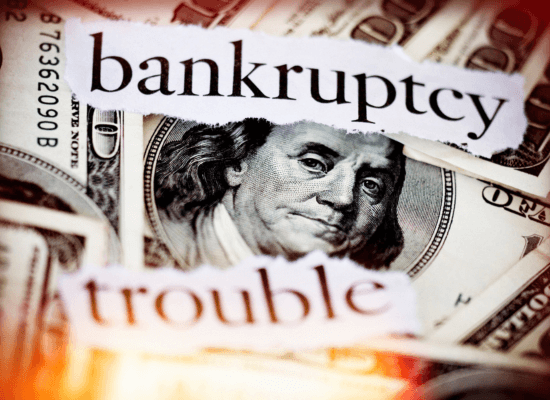Corporate bankruptcy is a distressing event that can have far-reaching consequences for a business, its employees, shareholders, and the broader economy. Understanding the common causes of corporate bankruptcy is crucial for both business owners and investors to make informed decisions and mitigate risks.
In this article, we will delve into the most prevalent reasons that lead companies down the path to bankruptcy.
Common Causes Of Corporate Bankruptcy
There can be endless reasons that can create harsh situations like corporate bankruptcy and naming them all is a tough task. This is why we are going to name the few common reasons and learn about them. Here are some of the common causes of Corporate Bankruptcy.
Poor Financial Management:
One of the primary culprits behind corporate bankruptcy is poor financial management. This encompasses a range of issues, including inadequate budgeting, mismanagement of funds, and an inability to control expenses. In many cases, companies fail to maintain a healthy balance between revenue and expenses, causing them to accumulate unsustainable levels of debt. This can lead to a downward spiral of increasing interest payments and, ultimately, bankruptcy.
Excessive Debt:
Excessive debt is a common cause of corporate bankruptcy. Companies that overextend themselves by taking on too much debt may find it challenging to meet their debt obligations, especially when economic conditions worsen. High levels of debt can limit a company’s ability to invest in growth opportunities, making it difficult to compete effectively in the market.
Economic Downturns:
Economic downturns, such as recessions and financial crises, can significantly impact a company’s financial stability. Reduced consumer spending, decreased demand for goods and services, and tighter credit markets can all lead to lower revenue and profit margins. Businesses that are unable to adapt to these challenging conditions or lack sufficient financial reserves may face bankruptcy.
Decline in Market Demand:
A sudden decline in market demand for a company’s products or services can spell disaster. This could result from shifts in consumer preferences, technological advancements, or competition. Failing to innovate and adapt to changing market dynamics can lead to declining sales and eroding profitability, ultimately pushing a business toward bankruptcy.
Competition:
Fierce competition can put immense pressure on companies, particularly if they are unable to differentiate themselves or offer unique value propositions. Price wars and aggressive market strategies can squeeze profit margins, making it difficult for businesses to sustain their operations.
Ineffective Leadership:
Leadership matters greatly in the corporate world. Companies with ineffective or poorly managed leadership often suffer from misaligned strategies, poor decision-making, and a lack of innovation. This can lead to a lack of direction and the eventual demise of the business.
Regulatory Compliance Issues:
Regulatory compliance is a critical aspect of doing business. Failure to comply with laws and regulations can result in hefty fines and legal troubles, which can drain a company’s financial resources. In some cases, this can escalate to bankruptcy if the financial burden becomes too great.
Legal Disputes:
Legal disputes, including lawsuits and litigation, can be a substantial financial burden on a company. Costs associated with defending or settling legal claims can quickly escalate, and in some cases, the resolution may result in substantial financial losses that contribute to bankruptcy.
Technological Obsolescence:
In today’s fast-paced world, technology is continually advancing. Companies that fail to stay current with technological trends may become obsolete and lose their competitive edge. Inefficient or outdated processes can lead to inefficiency and higher costs, pushing a business closer to bankruptcy.
Lack of Diversification:
Overreliance on a single product, service, or customer can make a company vulnerable to sudden changes in the market. Diversification can spread risk and provide stability during challenging times. Businesses that fail to diversify their revenue sources may find themselves in financial distress if their primary income stream falters.
Poor Strategic Planning:
Effective strategic planning is essential for long-term success. Companies that lack clear, well-defined strategies may struggle to adapt to changing market conditions or may not capitalise on emerging opportunities. This can lead to a loss of market share and profitability, ultimately contributing to bankruptcy.
Fraud and Financial Irregularities:
Corporate fraud and financial irregularities can result in substantial financial losses and legal repercussions. Manipulation of financial statements, embezzlement, or other fraudulent activities can lead to severe consequences, including bankruptcy and legal actions against key executives.
Conclusion:
Corporate bankruptcy is a complex and multifaceted issue, often formed from a combination of several of the above discussed causes. To prevent bankruptcy, companies must maintain sound financial management practices, adapt to changing market conditions, and invest in innovation. They should also prioritise legal compliance, dispute resolution, and effective leadership.
Recognizing the common causes of corporate bankruptcy is the first step toward mitigating the risks and challenges that businesses face. By addressing these issues proactively(with the help of corporate lawyers) and implementing strategies for resilience, companies can enhance their prospects for long-term success and financial stability.
